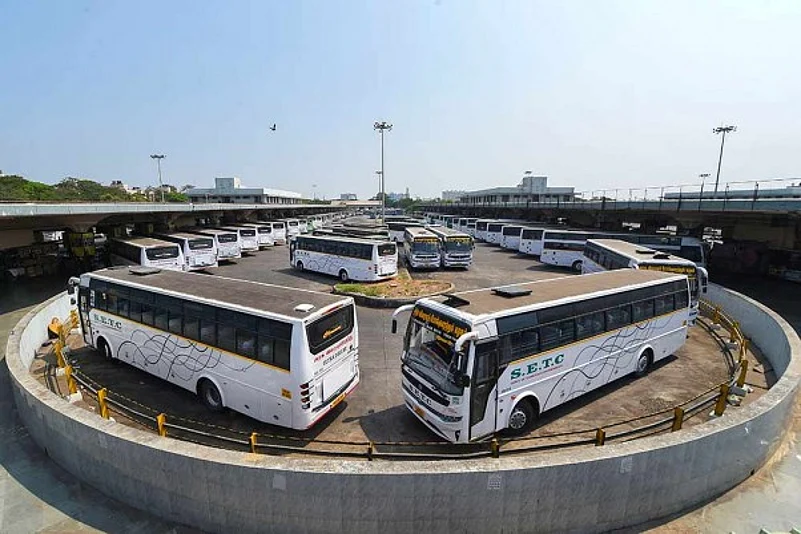The Indian government’s decision to impose a 21-day nationwide lockdown in the wake of the coronavirus pandemic reduces the overall severity of the disease by limiting the spread of the virus. However, the same decision exacerbates the economic slowdown by reducing the labour supply as well as consumption of goods and services. The government needs to address this dichotomy through adopting more efficient measures of containment of coronavirus and launching a series of financial relief packages. Each of these measures, if executed timely and aggressively, will generate spillover benefits on the other.
Taking into consideration the global morbidity and mortality rates due to COVID-19, India is likely to tick upwards of 1.3 million cases by May. With an estimated 0.7 hospital beds per 1000 people and a 20% global average hospitalisation rate due to COVID-19 infection, approximately 0.26 million patients will need hospitalisation in India. Assuming 10% of the hospital beds are ICU beds and 50% of these beds have ventilators, we have a maximum of 40,000 ICU beds with ventilators. Considering 5-10% of all patients will require critical care in form of ventilator support, other things equal, we will put lives of at least 37,500 patients at serious risk. However, this is based on a worst-case scenario, relying heavily on global estimates that have a different risk and comorbidity profile. Given only 22% of the registered deaths in India are medically certified, the real mortality rate due to COVID-19 will be significantly less in India.
While it is possible to reduce the spread of infection through measures such as lockdown, infections would recur as soon as the lockdown ends. This is because, in this approach, the population never reaches the critical level of immunity to avoid a recurrence of the epidemic. In the absence of a vaccine and treatment, addressing this problem will involve a two-step approach: (1) aggressive testing of cases along with increasing the number of quarantine facilities; followed with, (2) a gradual relaxation of containment measures as the number of new cases begins to decline so that the population approaches the critical immunity level. Other things equal, the only way out of this pandemic will be to have a substantial population to become infected and recover to acquire immunity.
Testing everyone with flu-like symptoms will ensure COVID-19 cases do not mix with the other hospitalised patients. In doing so, the use of rapid diagnostic tests should be preferred over RT-PCR to overcome the delay in testing. The Auxiliary nurse midwife network should be strengthened by infection control training to help provide effective and timely care to village communities. An immediate ban on over-the-counter selling of anti-malarial drugs should be implemented to maintain the stocks and ensure the medicine is available to those in need. Given the low levels of infection control in most urban hospitals and high risk of infections, the state governments should consider converting empty hotels into force majeure hospitals.
Although the government has promised Rs. 1.7 lakh crore relief package to mitigate the economic damage caused due to coronavirus, Care ratings estimate the cumulative economic cost of a 21-day lockdown at Rs. 6.3-7.2 lakh crore. Therefore, the current relief package is likely to be insufficient. This problem is compounded with 90% of the total workforce engaged in informal economy and a vast majority of these constitute the daily wage earners. To make matters worse, the relief package largely misses out on any support promised to the urban poor. The lockdown has forced millions of migrant workers into joblessness and restrained them to the urban areas - leaving them with no choice of taking succour with their families.
While further economic measures are anticipated, the government has not yet clarified how the Rs 1.7 lakh crore relief package will be funded. There is an urgent need to identify additional resources and maximise its utility. The windfall gains from the falling crude oil prices can provide a much-needed additional pocket to the government for providing additional financial assistance. Although there is a fall in the domestic demand for oil, the loss in revenue will be outweighed by the gains through the recent increase in the excise duty on petrol and diesel. While it may be a little too late, the government can still benefit from implementing some of the measures taken by South Korea, who have flattened the curve of new infections without the economically damaging nationwide lockdown. For instance, adopting measures such as use of thermal imaging, setting-up of standalone testing centres, and robust contact tracing.
The subsequent relief measures must target salaried employees. The government can provide wage support guarantee to ensure that businesses retains their employees while delaying hiring. Amongst other bold steps, the government must also give an executive order to all conglomerates to manufacture largescale and high-quality gloves, sanitizers, testing kits, and ventilators. The unprecedented disruption of economic activity also warrants the RBI to leverage its unique position to absorb the financial risk without worrying about the quality of its balance sheet. The RBI can effectively buy securitised tranches of loans from banks if the banks are wary of the current scenario in lending retail loans.
A national lockdown with border closures is likely to be ineffective as it will aggravate the economic damage and reduce the population resilience for fighting the infection peak. With an economy that was already sliding off the slope, India must reconsider its stance on the nationwide lockdown to ensure the economy does not fall off the cliff.
(Himanshu R Sharma is a trained economist from the London School of Economics and currently works with a leading philanthropic organization. Views expressed are personal.)
















